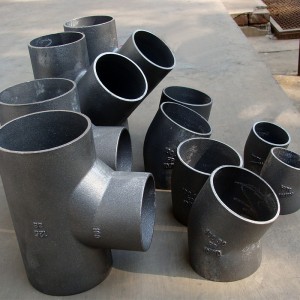- Afrikaans
- Albanian
- Amharic
- Arabic
- Armenian
- Azerbaijani
- Basque
- Belarusian
- Bengali
- Bosnian
- Bulgarian
- Catalan
- Cebuano
- China
- China (Taiwan)
- Corsican
- Croatian
- Czech
- Danish
- Dutch
- English
- Esperanto
- Estonian
- Finnish
- French
- Frisian
- Galician
- Georgian
- German
- Greek
- Gujarati
- Haitian Creole
- hausa
- hawaiian
- Hebrew
- Hindi
- Miao
- Hungarian
- Icelandic
- igbo
- Indonesian
- irish
- Italian
- Japanese
- Javanese
- Kannada
- kazakh
- Khmer
- Rwandese
- Korean
- Kurdish
- Kyrgyz
- Lao
- Latin
- Latvian
- Lithuanian
- Luxembourgish
- Macedonian
- Malgashi
- Malay
- Malayalam
- Maltese
- Maori
- Marathi
- Mongolian
- Myanmar
- Nepali
- Norwegian
- Norwegian
- Occitan
- Pashto
- Persian
- Polish
- Portuguese
- Punjabi
- Romanian
- Russian
- Samoan
- Scottish Gaelic
- Serbian
- Sesotho
- Shona
- Sindhi
- Sinhala
- Slovak
- Slovenian
- Somali
- Spanish
- Sundanese
- Swahili
- Swedish
- Tagalog
- Tajik
- Tamil
- Tatar
- Telugu
- Thai
- Turkish
- Turkmen
- Ukrainian
- Urdu
- Uighur
- Uzbek
- Vietnamese
- Welsh
- Bantu
- Yiddish
- Yoruba
- Zulu
Oct . 18, 2024 13:01 Back to list
Heat Exchanger Operation Timeline and Maintenance Schedule Guide
Understanding Heat Exchanger Schedules A Comprehensive Overview
Heat exchangers play a crucial role in various industrial processes, ensuring efficient thermal energy transfer between different fluids. Given the importance of maintaining optimal performance, the scheduling of maintenance and operation for heat exchangers becomes a vital aspect of plant management. In this article, we will explore the significance of heat exchanger schedules, the components involved, and best practices to ensure their longevity and efficiency.
What is a Heat Exchanger?
A heat exchanger is a device designed to transfer heat between two or more fluids without mixing them. Common applications include HVAC systems, chemical processing, power generation, and food processing. The effectiveness of a heat exchanger is influenced by several factors, including flow rates, temperature differences, and the physical properties of the fluids involved.
Significance of Heat Exchanger Schedules
1. Preventive Maintenance Regular maintenance schedules are essential to ensuring the efficiency of heat exchangers. Accumulated fouling, corrosion, and other wear can hinder performance. A well-planned maintenance schedule allows for timely inspections and cleaning, thus extending the lifespan of the equipment and preventing unexpected downtimes.
2. Performance Monitoring Incorporating regular performance evaluations into the schedule helps in tracking the effectiveness of heat exchangers. Parameters such as temperature differentials and pressure drops should be recorded to identify any deviations from expected performance. This data can indicate when maintenance is required or when the equipment is underperforming.
3. Regulatory Compliance Industries often operate under strict regulatory guidelines to ensure that equipment meets safety and environmental standards. A heat exchanger schedule needs to include compliance checks to avoid legal issues and potential fines.
Key Components of a Heat Exchanger Schedule
1. Inspection Intervals Establishing regular intervals for inspections is imperative. The frequency of inspections may vary depending on the type of heat exchanger, the fluid being processed, and the operational environment. Typically, these intervals could range from monthly to annually.
heat exchanger schedule

2. Cleaning Procedures Depending on the fluid properties and the design of the heat exchanger, cleaning may be required at specific intervals. There are different cleaning methods, such as chemical cleaning, mechanical cleaning, or online cleaning systems. The schedule should specify which method to use and when to implement it.
3. Documentation Maintaining thorough documentation of all maintenance activities is crucial. This includes detailing inspections, cleaning, repairs, and any changes made to the operation parameters. Documentation not only aids in tracking the performance over time but also assists in future decision-making and regulatory compliance.
4. Personnel Training The personnel responsible for maintaining and operating heat exchangers must be well-trained. A schedule should encompass regular training sessions to keep staff updated on the latest techniques, safety protocols, and equipment updates.
Best Practices for Effective Scheduling
1. Utilize Technology Modern monitoring systems that employ IoT (Internet of Things) technology can provide real-time data on heat exchanger performance. By incorporating smart technology into the scheduling process, operators can predict maintenance needs and avoid unscheduled downtimes.
2. Optimize for Plant Operations Scheduling should align with overall plant operations to minimize disruptions. Maintenance activities should be planned during low-demand periods to ensure that the heat exchanger’s capacity is not compromised when it is most needed.
3. Review and Adjust Periodic reviews of the heat exchanger schedule are essential. Performance analysis, changes in operational practices, or fluid properties may require adjustments to the maintenance plan. Continuous improvement should be at the forefront of scheduling practices.
Conclusion
Creating an effective heat exchanger schedule is integral to maintaining operational efficiency and promoting longevity in industrial processes. By focusing on regular maintenance, monitoring performance, ensuring compliance, and employing best practices, industries can significantly enhance their heat exchange systems' reliability and effectiveness. As technology advances, these schedules will continue to evolve, fostering a proactive approach to thermal management in various applications.
-
8mm Thin-Walled Cast Steel Manhole Cover Pallet Bottom Ring | Durable
NewsAug.04,2025
-
Premium Cast Iron Water Main Pipe: Durable, Corrosion-Resistant
NewsAug.03,2025
-
Durable Cast Iron Water Mains | AI-Optimized Systems
NewsAug.02,2025
-
High-Efficiency Propane Boiler for Baseboard Heat | Save Energy
NewsAug.01,2025
-
Premium Source Suppliers for Various Gray Iron Castings
NewsJul.31,2025
-
Durable Cast Iron Water Main Pipes | Long-Lasting
NewsJul.31,2025


